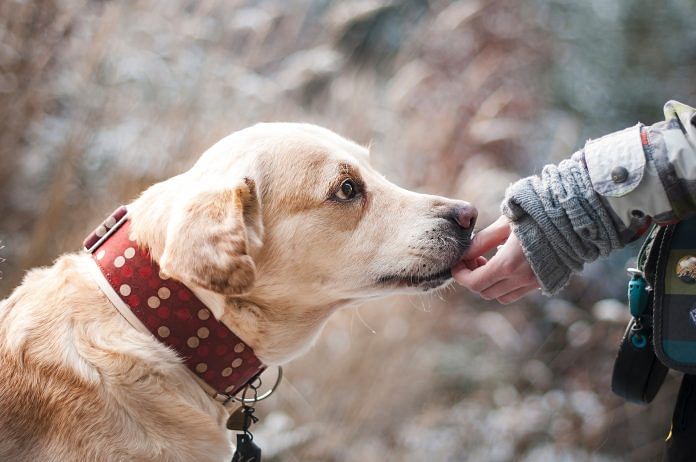Where do dogs come from? What is their relationship to wolves?
Where do Homo sapiens come from? What is our relationship to other human species such as Neanderthals, Denisovans and Homo erectus?
Why do dogs flourish as wolves struggle to survive? Why are we the only remaining humans?
New research suggests that these diverse questions have a single answer.
In brief: Dogs are far less likely than wolves to respond to challenges with violence (or by running away). Or, in more technical terms, they show low levels of “reactive aggression” in social interactions.
As compared to extinct human species, Homo sapiens show precisely the same thing. As a result, we — you and I — are uniquely capable of trust and cooperation. That’s the basis of our evolutionary triumph.
Some of the key research has been done by anthropologist Brian Hare of Duke University, who gives this process a name: Survival of the Friendliest.
Let’s start with Man’s Best Friend. The defining work began in the 1950s, with research inaugurated by Soviet geneticist Dmitri Belyaev, the most visionary scientist you’ve never heard of. Under Soviet rule, Belyaev’s job was to raise silver foxes, prized for their pelts. But he was actually interested in the origins of dogs.
Belyaev had a startling hypothesis, which was that all of the characteristics of dogs evolved from one feature: docility.
At some point in ancient history, Belyaev speculated, relatively docile wolves mated with one another. Their offspring became more docile still, and the offspring of those offspring were even more so.
Over the course of many generations, dogs emerged. Belyaev boldly hypothesized that all of the physical features of dogs, distinguishing them from wolves — floppy ears, multiple colors, two menstrual cycles annually (female wolves have only one) — were a byproduct of docility.
To test that hypothesis, Belyaev worked with collaborators to separate out the less fearful and least aggressive silver foxes and to have them breed with one another. His goal? To turn foxes into dogs.
Also read: Mizoram has a wild animal that’s rarer than the tiger but is thriving
After a few generations, Belyaev started to see results. His young foxes became calmer. Some even wagged their tails as human beings approached. Others flopped on their backs, asking for belly rubs. They would fetch balls.
As the experiment continued, the foxes’ physical appearance started to change. They developed floppy ears. Their fur showed white patches.
The most dramatic changes involved their personalities. To be sure, they were not dogs. But they were pretty close. People could take them on walks. They would sit on command. (“Good fox!”) They were eager to cuddle. The Russian Fox Domestication Experiment, as it is sometimes called, continues to this very day.
Influenced by Belyaev’s experiments, Hare has discovered that just like human beings, and unlike wolves and all other wild species, dogs can read social cues. If, for example, a human being points to the left, a dog will look in that direction, picking up the signal: “Look there!”
After traveling to Russia, Hare was amazed to find that Belyaev’s domesticated foxes — unlike ordinary foxes — share that characteristic with dogs.
But the most ambitious work on these issues has been done by Harvard anthropologist Richard Wrangham, who has elaborated a proposition at which Belyaev just hinted, which is that Homo sapiens is the domesticated member of the human species. Wrangham argues that a decline in reactive aggression is the defining feature of Home sapiens.
Wrangham offers evidence that the human species that died out were, essentially, wilder versions of, well, us. “Their archaic looks were of a species that differed from Homo sapiens rather as a chimpanzee does from a bonobo, or a wolf from a dog,” he wrote in his 2019 book, “The Goodness Paradox.”
Compared to Home sapiens, previous human species had broader and heavier skulls and thicker skeletons. As Homo sapiens emerged, the size of the face and the brow ridge diminished. Male faces became more feminine as sex differences were reduced. These are the anatomical characteristics of domestication.
Also read: Unlike pets, not-so-cute animals pay a heavy price as they can’t use human expressions
Wrangham argues that because of a comparative decrease in reactive aggression, Homo sapiens had a variety of significant advantages, including an ability to learn from and to cooperate with one another. As Wrangham puts it, “Docility should be considered as foundational of humankind, not just because it is unusual, but because it seems likely to be a vital precondition for advanced cooperation and social learning.”
You might find Wrangham’s thesis a bit jarring. After all, modern human beings are capable of nuclear and conventional war, genocide and immense cruelty. Wrangham also emphasizes that we are uniquely capable of “proactive aggression,” that is, aggression that involves a lot of advance planning.
What we share with our Best Friend is a major reduction in immediate, reflexive, violent responses to real or apparent threats and frustrations. And of course, people, like dogs, are diverse on this count. Some people are more like wolves; others are more like Labrador retrievers.
Belyaev, Hare and Wrangham are making claims about evolution, not about politics, and certainly not about contemporary political life. But they tell us something about what keeps societies together and what makes them fall apart — and also, I think about what separates out the best of us.
Evolutionary anthropologists use the word “docility,” but a stronger term, suitable for both dogs and people, is grace. It is the opposite of savagery. It signals an ability to think charitably of others, which is crucial to an absence of reactive aggression. And in social interactions, grace generally breeds more of itself.
It’s something to be grateful for. Happy Thanksgiving.
Also read: How to keep dogs safe this Diwali without offending your religion






